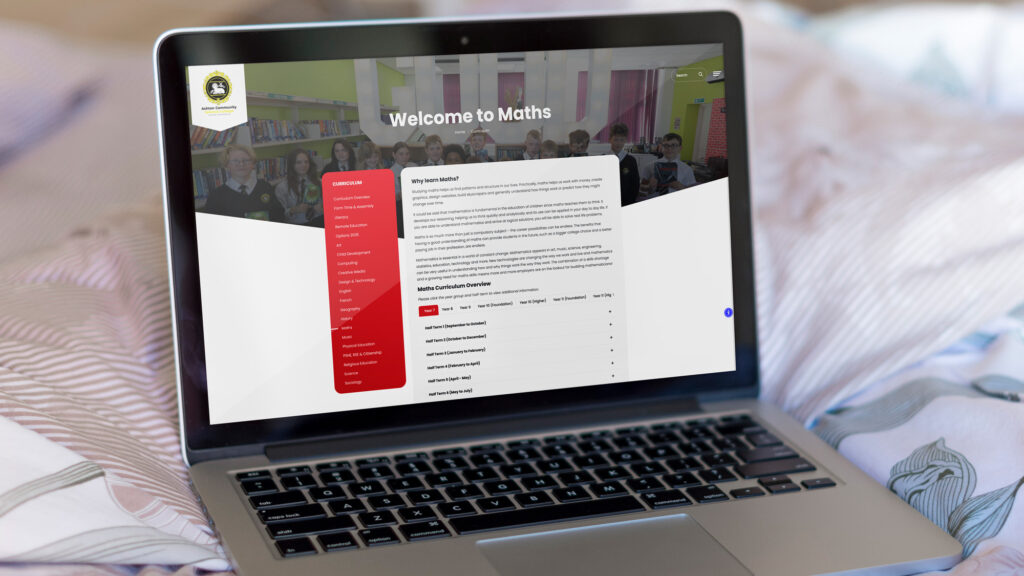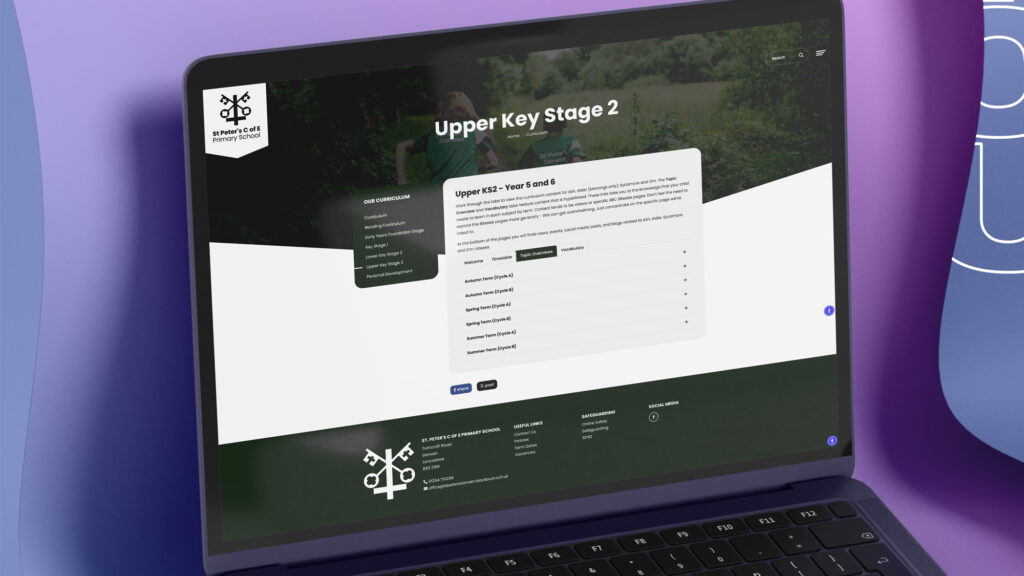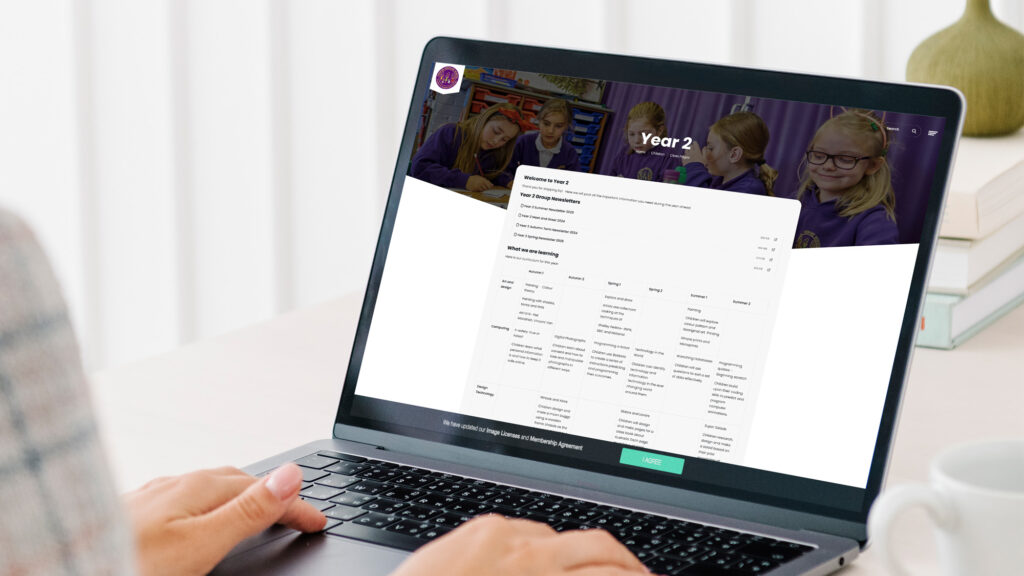How to Showcase Your School Curriculum on Your Website
How to Showcase Your School Curriculum on Your Website

When a prospective parent, Ofsted inspector, or even a member of your school community visits your school website, the curriculum pages often shape their first impression. More than any single landing page or announcement, your curriculum content speaks volumes about your priorities, structure, and care.
In this guide, we’ll show you exactly how to showcase your school curriculum on your website. It’s about much more than compliance—it’s about creating a balanced education experience that’s accessible, meaningful, and useful for everyone: prospective families, current students, and the broader community.
Why Curriculum Pages Matter
Your curriculum pages serve many audiences:
-
Prospective parents looking to understand what their child will learn.
-
Prospective students who want a sense of school life and what to expect.
-
Ofsted inspectors who judge intent, implementation, and impact.
-
Current parents who want to support learning at home.
-
School staff managing and updating content.
And yet, many schools still see curriculum pages as a compliance chore. But when you get them right, curriculum pages:
-
Strengthen your school branding.
-
Reflect your school’s mission and values.
-
Help create a stronger connection with your community.
-
Offer insight into what teaching and learning really look like at your school.
What You Must Publish Online
Whether you are a maintained school, academy, or international school, the DfE website requirements for 2025/26 outline key information you must publish on your school website:
-
Subject content taught for each academic year.
-
Details of Religious Education, including parents’ right to withdraw.
-
Reading schemes used at Key Stage 1.
-
Courses offered at Key Stage 4 and Post-16.
-
Your Relationships and Sex Education (RSE) policy.
-
An up-to-date accessibility plan.
-
How parents can find out more about your school curriculum.
This ensures that your school provides a broad and balanced education and meets your legal obligations.
HTML First, PDF Second
A common mistake is placing your entire curriculum inside PDF downloads. This makes it harder for parents to access and harder for Ofsted to navigate. We recommend:
-
Publishing curriculum online using structured, mobile-friendly HTML pages.
-
Including print-friendly PDFs only as companions, not the primary source.
-
Using properly coded headings, lists, tables, and internal links.
The accessibility legislation for public sector websites means your curriculum pages must be compliant with WCAG 2.1 AA standards. Meeting these standards also helps everyone who visits your site—especially those using assistive technologies.
Choose the Right Structure: Year Group or Subject?
The best way to organise your curriculum depends on your setting:
-
Primary schools: Parents want a breakdown by year group. Focus on what pupils are learning in Year 1, Year 2, and so on.
-
Secondary schools: Students and families browse by subject. Subject hubs (Maths, English, Science, etc.) make it easy to find what matters.
Avoid duplicating content across multiple pages. If you must show both year group and subject views, link year overviews to subject pages instead of copying content. This also makes it easier to maintain.
Real Curriculum Page Examples You Can Learn From
1. Blackpool Skills Academy (SEMH Setting)

-
Uses accordions to keep content clean.
-
A five-column table helps structure the curriculum content clearly.
-
Includes links to external learning resources for each term.
-
Tailored to help parents access content easily.
2. Ashton CSC

-
Combines tabs and accordions for a streamlined subject view.
-
Each year group includes curriculum intent, skills, and assessment.
-
Great for showcasing a subject across an academic year.
3. St Peter’s CE Primary

-
Key Stage pages with tabs for timetable, topics, vocabulary, and staff intros.
-
A calm, easy-to-navigate structure, especially helpful for prospective families.
-
Excellent use of hyperlinks for resources.
4. Jericho Primary School

-
A single page overview that includes newsletters and curriculum in one table.
-
Ideal for many schools looking to keep updates minimal.
5. Garstang Community Academy

-
Uses tabs for each subject, paired with strong branding.
-
Subject leaders offer an introduction and contact info.
-
Good model for secondary schools or trusts.
Bring the Curriculum to Life
Once you’ve got the structure, bring the curriculum content to life:
-
Add short videos from Heads of Department.
-
Show examples of student work.
-
Include alumni stories (“Where are they now?”).
-
Pull in news or upcoming events related to each subject.
These additions help your site:
-
Appeal to prospective students.
-
Engage current families.
-
Reinforce your school’s mission.
-
Strengthen the sense of school community.
Don’t forget to use high quality images that represent your school environment and curriculum in action.
Help Parents Support Learning at Home
One of the best ways to use your curriculum pages is to turn them into a learning hub:
-
Share vocabulary lists.
-
Link to BBC Bitesize or Oak Academy.
-
Provide practical “teach me at home” ideas.
-
Link to term dates and weekly objectives.
Why? Because families want to help—they just need clear prompts. When parents engage meaningfully, their child benefits. The Education Endowment Foundation (EEF) shows an average of 4+ months of progress when schools support learning at home.
Accessibility Tips
Here’s a checklist to ensure your curriculum online is accessible:
-
HTML pages with properly structured content.
-
Headings, tables, and internal links.
-
Captions or transcripts for embedded videos.
-
Text descriptions for any images.
-
A clear, up-to-date accessibility statement.
Make Maintenance Manageable
The best curriculum pages don’t just look good—they’re easy to manage. Here’s how:
-
Assign one content owner per subject or year group.
-
Create simple templates for staff to follow.
-
Use internal tagging to pull in real-time updates or recent events.
-
Refresh content once per academic year.
If you’re managing multiple school sites within a Trust, the Schudio MAT Portal makes this process simple and centralised.
Tips for International Schools and Special Settings
-
International schools may want to include how their curriculum aligns with the UK curriculum or other national standards.
-
Highlight mandatory subjects and explain how they are delivered.
-
SEMH or SEND-focused schools can showcase how they personalise curriculum while meeting national expectations.
-
Use your curriculum pages to reflect a diverse community, celebrating inclusion.
Key Takeaways
-
Use your school website to create more than a list of documents.
-
Showcase a balanced education with clarity and care.
-
Focus on structure, accessibility, and storytelling.
-
Make it easy for families to engage and support.
-
Build pages that reflect your school’s goals and values.
Curriculum pages are not just for compliance. They are for your community.
Want Help?
If you’re unsure where to start or want to audit your curriculum pages, we can help.
-
Join our next live School Website Compliance Workshop: Book Here
-
Or request a compliance audit of your website.
We’re here to help your curriculum pages work harder—for inspectors, for prospective parents, and most of all, for your students.










